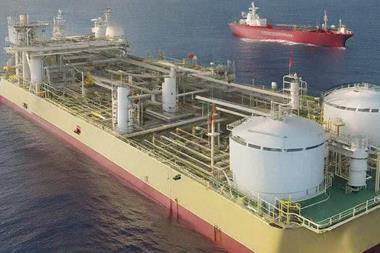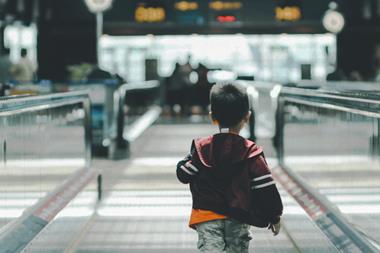Returns from aircraft leasing are expected to drop as rent deferrals, asset re-pricing and obsolescence bite. However, the sector is holding up for now, writes Razak Musah Baba
Aircraft leasing gives airlines the ability to use aircraft without the cost of owning the asset and the flexibility to vary seat numbers based on passenger demand. For lessors and investors, it is intended to be an attractive, portable real asset, and one that generates stable cash flows.
The coronavirus pandemic has decimated air travel, as revealed by the International Air Transport Association’s numbers for September, showing global flights fell 51% to 1.44m from 2.97m over the same period last year.
Johann Juan, senior director at Fitch Ratings, says: “Airline traffic beyond this year involves a great deal of uncertainty, just given the unknowns of future travel restrictions, the pace of new current coronavirus cases and the timing of vaccines and treatments…the baseline scenario for 2021 is that air travel is unlikely to return to 2019 levels until late 2022 to 2023 at the earliest.”
Fitch Ratings expects aircraft lessor impairments – reductions in the recoverable value of an asset – to increase, because of an anticipated rise in airline bankruptcies, elevated aircraft repossessions and declining aircraft values. Data from the ratings agency shows that, in the second quarter of the year, several lessors reported impairment charges of between 0.2% and 3.9%, up from the average range of 0.1-0.5% between 2016 and 2019. These were prompted by impairment tests on repossessed aircraft during the period.
Andrian Dacy, the global head of transportation at JP Morgan Asset Management, says that given the significant pressure the pandemic has placed on air travel, numerous airlines are requesting rent deferrals on their leased aircraft or are going into full restructuring or bankruptcy.
“Large, diversified lessors that have exposure to a broad part of the market are having to contend with reduced cash flow related to deferrals or the prospect of repossessing and re-marketing defaulted aircraft.” Dacy says it is expected that older, less efficient, aircraft will experience accelerated obsolescence and be retired more quickly than expected, negatively impacting returns.
The winter season is typically a difficult time for the airline industry, and the fall in business travel resulting from the pandemic will further adversely affect the market in the near term. Dacy says the current consensus is that pre-COVID activity levels “will not be reached until at least 2023 and perhaps as far out as 2025”.
A divergence in the airline market could occur in 2021. “Well-capitalised airlines, or those with access to liquidity [whether through government support or otherwise], will likely become the long- term benefactors from the pandemic. As current conditions are driving many competitors out of the market, those airlines that can survive will be well-positioned to gain market share and grow post-COVID.
“Lessors with exposure to these survivors will fare well, while those needing to re-market defaulted aircraft will likely face a tighter return environment as surviving airlines will be oversupplied with aircraft leasing opportunities in a reduced demand environment. To be sure, newer, fuel-efficient aircraft will continue to be in demand.”
Dacy believes that, in the longer term, pandemic notwithstanding, the secular drivers behind global passenger traffic remain intact, and levels should gradually recover and then increase over the next five to 10 years.
Mark Rogers, aviation finance managing director at Floreat Group, says: “Post-COVID, we believe the downward re-pricing of aircraft will increase long-term risk-adjusted returns that retain low correlation with other asset classes, providing portfolio investors with risk diversification opportunities.” Rogers says that with governments restricting travel and many people unable or unwilling to fly, airlines have suffered unprecedented revenue losses and they have approached aircraft lessors for lease payment relief.
“With little short-term global demand, lessors are generally utilising their stronger balance sheets and capital markets access to support clients,” Rogers says. “In the medium term, however, we think lessor balance sheets will weaken and they themselves will need to impair their balance sheets and sell assets to generate cash.
“Long-term, the share of leased aircraft is likely to increase as airlines seek more robust, liquidity-focused balance sheets by owning fewer aircraft directly. We believe this balance-sheet restructuring will create opportunity for long-term investors.”
Rogers expects there will be many opportunities for investors with dedicated aviation platforms over the coming 12-24 months. He says larger lessors are currently investing in large-scale transactions with core airline clients and, as these lessors restructure their balance sheets and seek to diversify exposures, they will syndicate risk out to smaller investors.
“Aircraft residual values have fallen and, coupled with a lack of bank and institutional capital, risk-adjusted returns are on the rise for knowledgeable investors that have capital to deploy,” he says. “We estimate that unlevered returns on liquid aircraft types on long-term leases to strong airlines have increased by 2-3% compared to 2019.”
As the airline industry struggles with the effects of the COVID-19 pandemic, PIMCO and GE Capital Aviation Services (GECAS) recently teamed up to create a $3bn (€2.5bn) aviation leasing platform to “provide much-needed financing for airlines which are looking to upgrade their fleets with young and new aircraft”.

At the time of the announcement, Dan Ivascyn, PIMCO CIO, said the new venture would “inject essential liquidity into this critical industry by providing financing solutions at a time when there are fewer traditional financing options for airlines”.
Greg Conlon, the president and CEO of GECAS, says the PIMCO-GECAS platform “will enable opportunistic plays to support our airline customers around the globe”.
Alok Wadhawan, head of Aviation Finance at Muzinich & Co, says: “The asset class aims to provide downside protection to investors due to the collateral package with dual security of credit and asset. The yield on the senior secured aircraft investment in private markets can be attractive on a relative-value basis to comparable investment-grade bonds.”
But he points out that the pandemic has affected aircraft values because of lower passenger traffic and forecast demand in the near term. “It would impact existing players who have been overweight in the leasing sector and acquired aircraft with high leverage,” he says. “As a result, we expect that in the near term there is going to be pain in the aircraft leasing market for incumbent players.
“However, in our view it creates opportunities for new entrants or those players who have been underweight in the sector to finance existing players who require capital or to acquire aircraft from motivated sellers. Further, we believe the long-term fundamentals of the industry are strong with air traffic demand expected to mirror the growth in global GDP.”
According to Evan Carruthers, CIO and managing partner of Castlelake, a recovery in the sector is dependent on a few variables, such as an effective vaccine, the lifting of border restrictions, and restoring the public’s confidence in flying.
“We believe our global economy is built on interconnectivity and aviation will continue to be core infrastructure for most major economies,” he says. “Accordingly, the current distress in the market offers a unique opportunity for investors to gain exposure to a core asset class at attractive entry points, but they need to do so in a risk-managed way that mitigates the current uncertainty.”
Carruthers says the system is capital-starved, which creates opportunities to provide liquidity to airlines and market participants whose balance sheets are constrained.
“These opportunities exist across direct aircraft acquisition/ownership, securitisations and enhanced equipment trust certificates,” he says. “Investors have an opportunity to work with leading airlines to finance their most mission-critical assets, and to be creative and flexible when it comes to structuring investments.”
Frank Segger, portfolio manager at KGAL, is also optimistic and says the industry will bounce back. Referring to previous events such as the SARS coronavirus, oil crises, the September 11 attacks and 2008 global financial crisis, Segger says that, time and again, the aircraft industry recovers.
In his opinion, the aircraft industry is attractive because there is a public interest as it provides effective, efficient transportation of people, goods and services. “It is important for national economies. And it is important for global economies. The governments around the world know this, especially the EU, the US and the Chinese, and they are dependent upon this efficient and effective form of transportation, and they will ensure that this survives.”
Travel & Tourism: End of an era
- 1
- 2
 Currently reading
Currently readingAircraft leasing: Performance headwinds
- 3
- 4
- 5
- 6
- 7
























